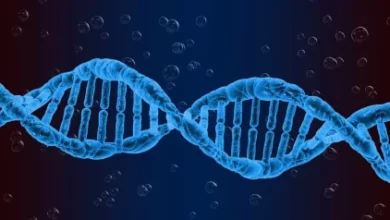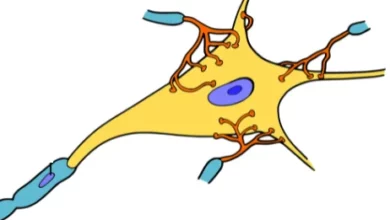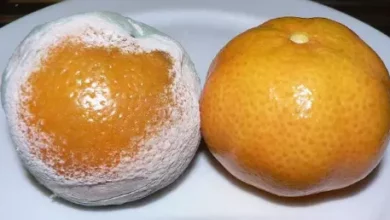Unveiled the mystery of a strange extinct mammal discovered by Darwin (and how mitochondrial DNA has been fundamental)
A taxonomic enigma
In Puerto San Julián, in a red silt that covers the gravel of the plain, 27 meters high, I found half a skeleton of the Macrauchenia patachonica , remarkable quadruped, as large as a camel. It belongs to the same division or group of the Pachyderms, together with the rhinoceros, tapir and Palæotherium, but in the structure of the bones of its long neck it offers an evident relationship with the camel, or rather with the guanaco and llama.
This is what Charles Darwin wrote in his journal about the discovery of fossil remains in what is now the province of Santa Cruz, in Argentina. The remains were discovered in 1834 and have been a headache for anthropologists ever since, as their classification was complicated. The first remains were sent to the famous naturalist Richard Owen, who made his first classification.
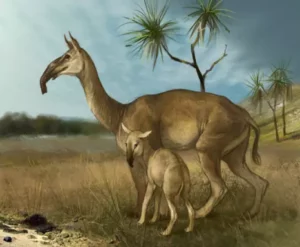
The bone structure of these animals was similar to that of a camel, but they had a trunk like that of tapirs. The fact that the genus did not have living representatives today did not help to classify them.
The ungulates are characterized by walking on the tips of their fingers, while the plantigrades do it with the plants of the extremities.
The genus Macrauchenia coexisted with the first humans to inhabit South America about 14,000 years ago, and charred bone remains have been found in an 8,500-year-old settlement. This proves that humans fed on some species of the genus. For different reasons, not entirely clear, no species of the genus has survived to this day .
The team of scientists that has carried out the new taxonomic classification of Macrauchenia patachonica had previously obtained DNA from other species of the genera Macrauchenia and Toxodon .
Toxodon is a genus of extinct large hoofed mammals, somewhat reminiscent of hornless rhinos. The DNA in these previous samples had been obtained from collagen debris . However, its obtaining was extremely complicated, due to how degraded the genetic material was.
What is Mitochondrial DNA?
In the recently published work with the new taxonomic classification of Macrauchenia patachonica , the mitochondrial DNA of the species has been used. But what is mitochondrial DNA?
Human cells have DNA in two places: the cell nucleus (whose function is to preserve genetic material) and in cellular organelles called mitochondria , whose main function is to generate energy for cells.
Why do mitochondria have DNA? Well, this is the strangest part of the matter. The DNA they contain is not human, but from the mitochondria themselves.
[box type = »info» align = »» class = »» width = »»] According to the endosymbiont theory proposed by Lynn Margulis in 1967, the mitochondria (like the chloroplasts of plant cells, responsible for photosynthesis) were free-living bacteria that symbiotically associated with eukaryotic cells (with cell nuclei). [/ box]
The fact that mitochondria and chloroplasts have their own genetic material, different from the DNA of eukaryotes, that they have a membrane similar to that of bacteria, that their size is similar to that of some bacteria and that they have their own cellular organelles (ribosomes, which are responsible for synthesizing proteins from DNA) strongly support the endosymbiont theory.
Mitochondrial DNA as a tool in taxonomic classification
The main advantage of using mitochondrial DNA for taxonomic classifications is that it is not integrated into the chromosomes of cells, but rather remains within the mitochondria. Each cell has a large number of mitochondria, about 100, and in each there are thousands of copies of mitochondrial DNA.
Therefore, while a single cell has one copy of the genome of the living being to which it belongs (or two copies if the organism is diploid, three if it is triploid, etc.), each cell has hundreds of thousands of copies of mitochondrial DNA . In this way, even if the DNA is degraded, it is still possible to extract a complete sequence from a few cells by reconstructing existing DNA fragments.
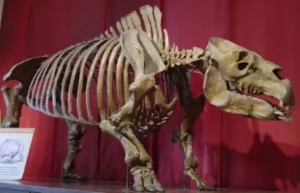
Michi Hofreiter, a researcher at the University of Postam expert in palaeogenesis and one of the authors of the work, has stated: “ Mitochondrial DNA is very useful to evaluate the degree of relationship between species. Our study corroborates and extends the results of other molecular research, published two years ago, that used protein collagen to infer relationships. Like this study, ours found that the closest living relatives of Macrauchenia are in the placental order known as Perissodactyla, which includes horses, rhinos, and tapirs. “
The results of this work were that Litopterna, the order to which the genus Macrauchenia belongs , is related to the order Perissodactyla and also reveal that these two groups share a common ancestor approximately 66 million years ago.
In addition, the utility of mitochondrial DNA as an indicator of the phylogenetic kinship of a species has been demonstrated once again, despite the fact that it has been extinct for thousands of years.
